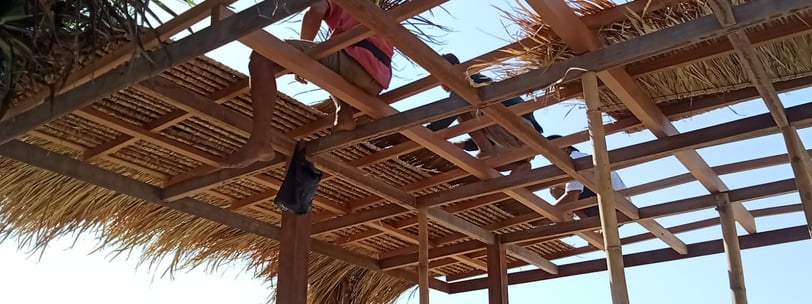Appreciating the Beauty of Reeds Roof


The process of installing an alang-alang roof, a method that combines traditional heritage with eco-friendly solutions. Workers are seen arranging reeds on a wooden frame, which is the part of the roof that has distinctive aesthetic characteristics. This technique not only provides a natural and artistic feel, but also brings many practical advantages.
Reeds, which have long been used by coastal and rural communities, have excellent thermal insulation capabilities, making them capable of keeping room temperatures cool in the heat of tropical climates. In addition, this material is also known to be eco-friendly as it is easily renewable and biodegradable, reducing the negative impact on the environment.
The installation process in the picture shows the skill and precision of the workers in arranging the roof. Each strand of reeds is carefully placed to ensure the roof is durable and strong against various weather conditions. The wooden structure supporting the reeds also looks sturdy, adding stability to the overall building.
Overall, this image not only captures a moment of hard work, but also illustrates how local architectural heritage remains relevant and applied in modern, more environmentally conscious developments. The use of reeds as a roofing material is increasingly popular, especially in green building projects such as villas, gazebos, or resorts in nature tourism areas.
With the increasing interest in sustainable architecture, the use of alang-alang is again becoming a mainstream choice, showing that tradition and innovation can go hand in hand to create better solutions for the future.
